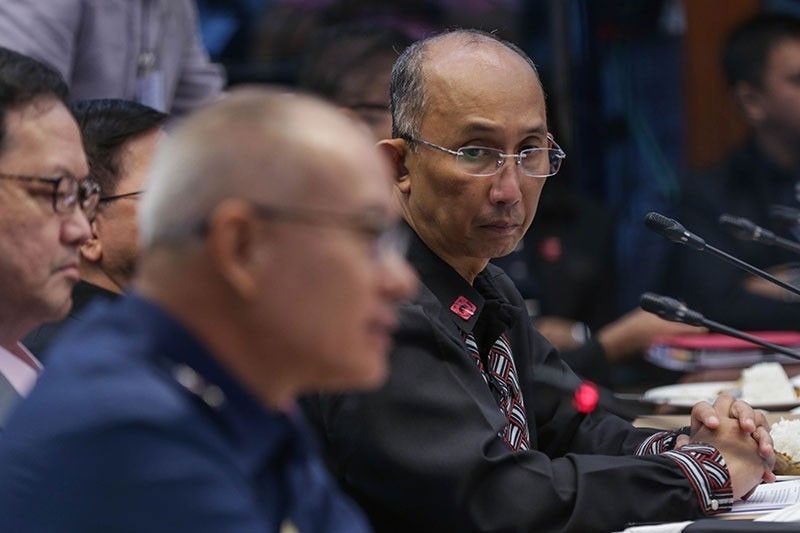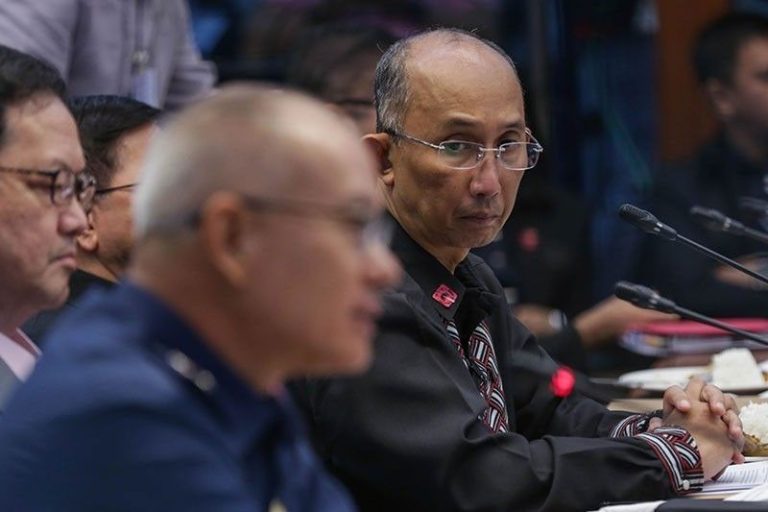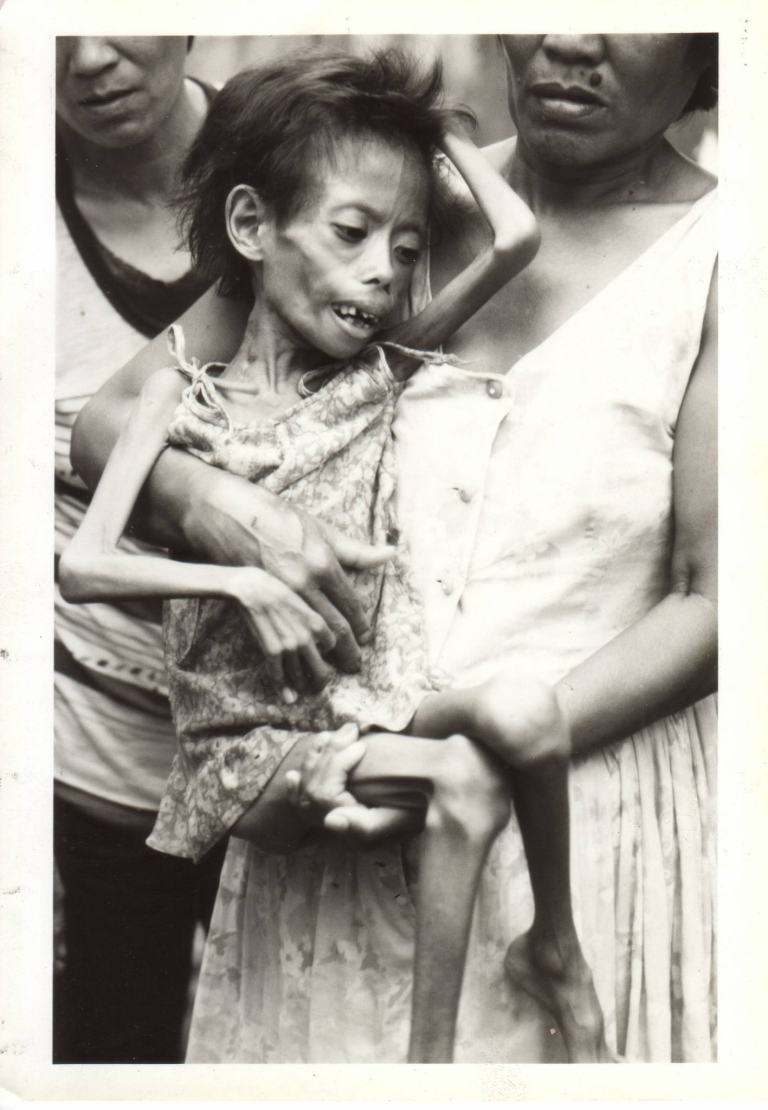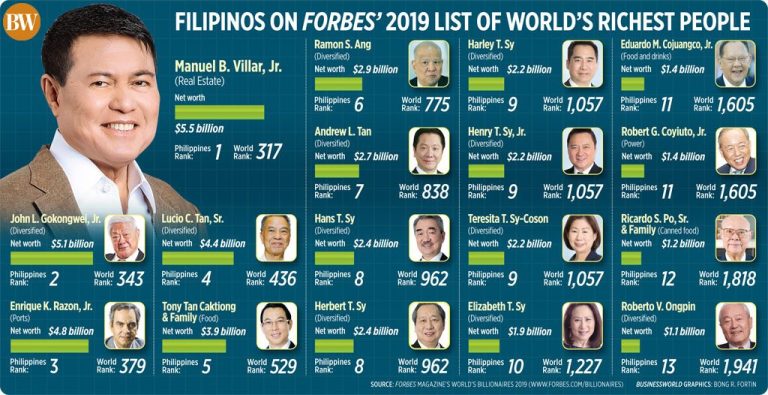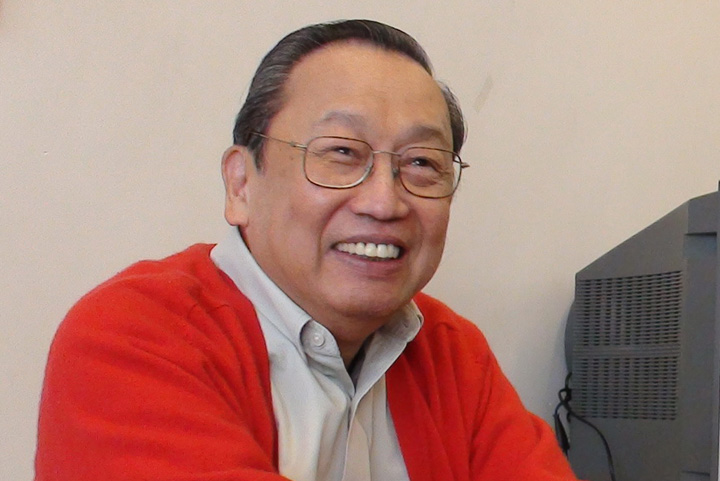Author Teo S. Marasigan Illustrator Townsunder, newnaratif.com
While it started labour export as a stop-gap measure, the Philippine government now aggressively exports Filipinos. Labour migration has helped address the short-term needs of migrant families and the economy, and has benefitted migrant-receiving countries, local elites and the government, but also poses serious long-term problems to migrants, Filipinos, and the country.
“This is my promise to you and God and to those working abroad, this will be the last. The next generation of Filipinos will work in the Philippines.”
President Rodrigo Duterte
President Rodrigo Duterte declared those words in a speech before Overseas Filipino Workers (OFWs) in Japan on October 25, 2016, promising an end to the phenomenon of Filipinos having to go abroad to find work. His government, however, showed no signs of aiming to achieve this. On the contrary, it aggressively made it easier to go abroad: in its first 100 days, it created a “one-stop shop” for prospective OFWs’ applications, sped up overseas employment applications processing, initiated efforts to extend the validity of Philippine passports from five to ten years, and enabled online seafarer registration (Hapal, 2016).
Most importantly, while campaigning for the presidency, Duterte promised to create a separate government department for OFWs (Ranada, 2016). In recent months, the newly-formed Department of Migrant Workers (DMW) has hit the ground running. The agency, created by Duterte in December 2021 and currently headed by a new secretary appointed in June 2022 by newly-elected president Ferdinand Marcos, Jr., has been busy promoting labour export, not the return of OFWs to the country (Tadios 2022a, 2022b, 2022c and Antonio 2022). Indeed, despite some presidents’ rhetoric recognising the Philippines’ export of its people as a situation that must be changed, the Philippine government has grown ever more aggressive in sending its citizens abroad to work.
In sum, while the export of workers provides immediate benefits to families of migrant workers, in the long term, it also causes serious problems for the workers, their families, and the country’s development. Nevertheless, the Philippine state continues to promote labour export. The reason is that it provides short-term benefits to the Philippine economy and, more importantly, boosts the profits of foreign and local elite interests. Much like the popular street drug shabu (crystal meth) or other stimulant drugs, labour export gives the Philippines short-term stimulation but creates a dangerous dependency, slowly destroying the country.
In migration studies, as in many areas of the social sciences, there is a debate about the relative importance of individual agency vs structure in explaining phenomena. While there are ways of bringing these poles together, this explainer will focus on structures, particularly the political, economic, and policy forces responsible for the OFW phenomenon. In a subsequent explainer, New Naratif will focus on human agency and individual experiences with migration.
Who are the OFWs?
The Overseas Filipino Workers phenomenon has become so institutionalised that the government has a formal name for it. To understand the problem, we first need to understand who the OFWs are. Although the initialism “OFW” sometimes refers to all Filipinos outside of the Philippines, the government makes a technical distinction between Overseas Filipinos (OFs, defined as those outside the country at any given time) and OFWs. OFWs are technically Filipinos who, within the past 12 months, have been engaged in an activity for which they are remunerated in a country where they are not a resident. OFWs also include Filipinos working aboard vessels (except government-owned ships used for military or commercial purposes), offshore installations, or in the high seas.
Out-migration figures from the Philippines are some of the highest worldwide, comparable to that of other “diasporas” calculated in 2020.
Another way to understand OFWs is to understand who are not OFWs: “permanent migrants” whose stay abroad is not dependent on employment, including legal permanent immigrants, permanent residents, naturalised citizens, and dual citizens. “Irregular migrants” refers to people who lack proper documentation, valid residence or working permits, or are overstaying in a foreign country (CFO, 2014, p. 22).
OFWs fall into a third category, “temporary migrants”, those dependent on foreign employment and expected to return to the country after the end of their contracts. This category includes OFWs, students, trainees, businessmen, and their dependents.
Accounting for these categories, there were 10.2 million OFs in more than 200 countries and territories worldwide, of whom 4.2 million were temporary migrants in 2020. 4.8 million were permanent, and 1.2 million were irregular. (CFO, n.d.). Out of the 4.2 million, there were 1.77 million OFWs in April to September 2020, during the height of the Covid-19 pandemic, already half a million fewer than the previous year. Almost 60% are women, and 40% as men (PSA 2022).
Most were employed in the so-called “elementary occupations” defined by the International Labour Organisation (2004) as performing “simple and routine tasks which mainly require the use of hand-held tools and often some physical effort.” In other words, jobs like domestic and construction workers, though not nurses, which is another stereotypical OFW job.
83.6% of OFWs were employed in Asia, 6.7% in Europe, 5.2% in the Americas, and 3.4% in Australia (PSA & UPPI, 2019). The figure does not include a quarter of a million Filipino seafarers, who incidentally constitute a full quarter of the world’s total seafarers (Gonzalez, 2018).
Out-migration figures from the Philippines are some of the highest worldwide, comparable to that of other “diasporas” calculated in 2020: India (18 million), Mexico and Russia (11 million each), China (10 million), and Syria (8 million) (UN Department of Economic and Social Affairs, 2020). Comparing these figures with these countries’ populations in 2020 would yield even starker results: only war-torn Syria (45.7%) is higher than the Philippines (9.3%), followed by Mexico (8.5%), Russia (7.5%), China (6.9%), and India (1.3%) (Worldometers, n.d.).
The first national survey on migration in the Philippines in 2018 showed that 6.5% of the population aged 15 years and above had international migration experience that lasted for more than three months, significantly higher than the international average of 3.5% (Tabuga, Baño & Vargas, 2020, p. 7). Regional economic differences have resulted in the general division of Southeast Asia into labour-exporting and labour-importing countries—and the numbers of Philippine migrants widely outstrip those of its ASEAN neighbours. In 2007, populous Indonesia had 2.7 million migrant workers in Southeast Asia, second only to the Philippines’ 4.8 million migrant workers in the region in 2006 (Çıngır, 2022), despite Indonesia having over 2.6 times the population.
Follow the Money
One cannot talk about OFWs and their huge numbers without discussing remittances, which have been important for keeping the Philippine economy afloat and highlights the significance, economic and otherwise, of this phenomenon. In 2018, before the Covid-19 pandemic, remittances to the Philippines increased by 3.1% from the previous year, reaching USD 33.8 billion. This made the Philippines the fourth biggest remittance recipient country, following India (USD 78.6 billion), China (USD 67.4 billion), and Mexico (USD 35.7 billion). Comparing these figures with these countries’ populations in 2018 would show the level of dependence on these remittances: Philippines (USD 315.89), Mexico (USD 272.94), India (57.32 USD) and China (48.36 USD) (Population Reference Bureau, 2018).
The amount constitutes 10.2% of the country’s gross domestic product or GDP (World Bank Group & KNOMAD, 2019, p. 15). The percentage is higher than the global average of 0.8% that year (World Bank, n. d.) and even higher than Foreign Direct Investment flows to the country, which averaged 1.3% of GDP in 2000-2013 (Llanto, 2018).
The main sources of remittances were Asia (65%), North America (21%) and Europe (8%) (PSA & UPPI, 2019, p. 137). These remittances, generally sent through money transfer operators and banks and informal channels, are mostly used to purchase food and other basic necessities for families of migrant Filipinos.
Most OFWs report that they have saved at least sufficient resources to meet their families’ basic needs upon returning home permanently. In the national migration survey, 48% of respondents reported receiving international remittances, and most of these are directed to those perceived to be in need: “older cohorts, widowed or separated, unemployed, rural residents, and those living in the economically more deprived regions” (PSA & UPPI, 2019, p. 137). In other words, almost half of all Filipinos received remittances, and most of those who did were overwhelmingly among the poorer and more needy members of society—itself a statement about social welfare in the country.
Indeed, it is safe to say that the Philippines’ main export now is its people. Overseas migration has had a significant effect on the Philippines. At the macro level, overseas remittances are credited for GDP growth in recent years and energising the economy. Overseas migration has changed the country’s class structure, with families receiving sustained remittances entering the country’s middle class (Aguilar, 2014).
Many observers would easily agree with the observation that “no other phenomenon has paved the way for such deep and pervasive changes within the Philippine economic and social landscape” (Bello et al., 2014, p. 131). Despite these, however, overseas migration’s positive effects on migrants’ families and the economy are short-term, and its impact on the country’s development remains questionable, to say the least.
Indeed, it is safe to say that the Philippines’ main export now is its people.
Economic Mismanagement and the Creation of the OFW Phenomenon
It is important to ask: how did this important phenomenon start? Since the Spanish colonisation of the Philippines (1521-1898), Filipinos have been migrating abroad to find work. Under American colonisation (1898-1945) and continuing American neo-colonial influence afterwards, Filipinos initially went to the USA by the thousands to work in farms and canneries (Asis, 2017). This was due to push factors (poverty and unemployment in the Philippines) and pull factors (labour needs in more developed countries and labour rights making it harder to exploit citizens, thus reducing capitalist profitability).
The present-day OFW phenomenon traces its roots to the early 1970s when facing growing foreign debt, high unemployment, and balance of payment problems, the dictatorship of Ferdinand Marcos Sr., desperate for foreign hard currency, sent Filipinos to work in the Middle East.
The accrual of foreign debt is the most significant aspect of this process. Throughout his first term, Marcos Sr. fuelled growth through massive public spending funded by foreign loans. He also sought to undermine the economic power and political influence of the Philippines’ traditional elite. One strategy, common to autocrats everywhere, was to make “behest loans” to selected businessmen who were personally loyal to him, to fund large national development projects—the beginnings of “crony capitalism” in the Philippines, which would also fuel the growth of inequality (Magno, 1998).
In 1969, in a bid to become the first Philippine president to be elected to a second term, Marcos initiated a programme of rapid modernisation funded through massive deficits and foreign loans (Balbosa, 1992). In the run-up to the 1970 election, he launched US$50 million worth of infrastructure projects to create an impression of progress for the electorate. This campaign spending spree was so massive that it caused a balance of payments crisis, so the government ran to the International Monetary Fund (IMF) for help.
Never one to waste a crisis, the IMF’s debt rescheduling plan forced open the Philippine economy to numerous neoliberal and neocolonial macroeconomic interventions. These included a shift away from the Philippines’ economic strategy of import-substitution industrialisation towards export-oriented industrialisation and the floating and devaluing of the Philippine Peso. This resulted in high inflation that, combined with rising unemployment, public corruption, and alleged election cheating, led to massive demonstrations and protests (Magno, 1998; Diola, 2017). Marcos’ harsh response further radicalised the public, stoking public anger and leading to him proclaiming martial law in 1972 (Anastacio & Abinales, 2022).
The first OFWs were construction workers and engineers in the petrodollar-rich Saudi Arabia and other Middle Eastern countries, which were then enjoying a construction boom. Most histories of the OFW phenomenon say that the move was at first seen as a stop-gap, short-term measure by the dictatorship. It did not take long, however, before the government realised the significance of this measure in providing a source of much-needed dollar remittances and a pressure release valve for unemployment and social tensions (Asis, 2006; Tigno, 2004; Aguilar, 2004; Rodriguez, 2010).
The Labour Code of 1974 mandated one government agency, which later, in 1982, became part of the Philippine Overseas Employment Authority (POEA), to “promote the overseas employment of Filipino workers through a comprehensive market promotion and development program.” At the same time, the Code paid lip service to seek “overseas employment in excess of domestic needs.” In other words, from the very beginning, it was recognised that jobs should be created for Filipinos at home first.
However, the seductiveness of easy foreign remittances combined with domestic economic mismanagement would soon send successive governments to take the easy path of labour export. This removal of hindrances to foreign employers’ access to cheap labour was one of the early neoliberal policies implemented by the Philippine government (Africa, 2022).
Elsewhere, migrant remittances would outstrip foreign direct investments in poor countries by the 1990s, but because of crises, this occurred in the Philippines as early as the 1970s (Ball, 1997). Marcos continued to pile up foreign debt: Philippine external debt was at US$4.1 billion in 1975, doubled to US$8.2 billion in 1977, and ballooned to US$24.4 billion by 1982.
The end of the petrodollar glut and global economic downturns tightened credit. It raised interest rates, forcing the government to resort to short-term loans with higher interest rates to service its debts and import goods. The Philippines’ debt went up to more than 200% of exports from 1978 to 1991, so more than half the value of the country’s exports went to debt servicing rather than imports (Guido and de los Reyes, 2017).
Marcos’ cronies, who had been selected primarily because of their loyalty to Marcos rather than any proven business acumen, severely mismanaged their monopolies, forcing the government to bail them out. These businessmen, including Marcos’ immediate family, also plundered the country’s wealth, stashing funds from government projects in overseas bank accounts in Switzerland, the USA, and the Netherlands Antilles, among others.
By 1982, faced with another economic crisis, Marcos was already forcing OFWs to send 50% to 70% of their earnings to the country through a presidential decree (Asia Pacific Mission for Migrants 2015). In short, to service all the foreign debt Marcos had racked up, he was desperately selling the last natural commodity he had under his control—Filipinos—and taxing their income at sky-high levels.
While the 1986 “People Power” uprising that toppled the Marcos dictatorship ushered in some level of political change, it did not bring about fundamental economic change. It paved the way for sections of the elite boxed out by Martial Law to return to power (Anderson, 1988). At the same time, with massive foreign debt to pay off, the Philippines had to preserve neoliberal policies and ramp up their implementation to keep foreign capital happy. The basic economic policies that the Marcos regime put in place were continued by governments that succeeded it (Guido & de los Reyes, 2017).
In the 1980s, 1990s and 2000s, the Philippines registered the lowest economic growth in Southeast Asia, and its neighbours overtook it in manufacturing. This fundamental lack of industrial and agricultural development continues to this day, creating a remittance-driven economy and characterised by a big service sector, high unemployment and underemployment, and mass poverty and gross inequality. Labour export and the Business Process Outsourcing sector (aka the “call centre industry”) are the only bright spots in the economy (Ofreneo, 2015).
While initially employed as a stop-gap measure, the labour export strategy’s effectiveness at creating immediate economic benefits to the crisis-wracked economy encouraged the Marcos dictatorship and succeeding governments to sustain it. Instead of job-generating policies, the Philippines has become reliant on labour export to provide jobs, thus cementing it as a long-term policy—seemingly the antithesis of the developmental state model that had been vigorously pursued elsewhere.
As such, the Philippines is today dangerously reliant on remittances. By the late 1990s, global migrant remittances had exceeded portfolio investments and official development assistance and approximated the level of foreign direct investment (Yang, 2011). This not only encouraged governments to pursue labour export but has also led “international organisations in charge of neoliberal policy,” such as the IMF, to support a development agenda that “assumes migration can become a tool for development in countries with high emigration rates” (Wise & Covarrubias, 2012, p. 99).
Thus the Philippines has become a model, used as an example for neoliberal international organisations such as the IMF and World Bank to push for labour export and exploitation from other underdeveloped countries. In the following section, we explain how labour export was sustained.
How is the OFW Phenomenon Sustained?
A major change occurred in OFW deployment in the early 1990s—the “feminisation of migrant labour.” Women working in the service sector started outnumbering men working in the construction sector. Out of the deployed, newly-hired, and land-based OFWs in 1992, 50% were females, increasing “to 58% in 1995, 64% in 1999 and 72% in 2001” (De Guzman, 2003). This can be seen as a turning point in which the government could have chosen a policy shift on labour migration, especially amidst prominent cases of abuse faced by Filipinas abroad that stirred national public uproar: Maricris Sioson in Japan (1991), Flor Contemplacion in Singapore (1995), and Sarah Balabagan in the United Arab Emirates (1995). Stories similar to theirs will be covered in the next explainer.
All presidents after Marcos, in fact, glorified OFWs. Cory Aquino called them “bagong bayani” or “new heroes” and declared December the month of overseas Filipinos.
In a sense, the Migrant Workers and Overseas Filipinos Act of 1995 is a response to this turning point, in which the government declared that “the State does not promote overseas employment as a means to sustain economic growth and achieve national development.” However, its business-as-usual attitude showed the de facto policy of continuing labour export. Instead of changing course, the Philippine government heightened exporting workers, addicted to the policy’s positive but short-term benefits. Such a declaration is at odds with prior and succeeding government actions and statements.
Thus, the OFW phenomenon was sustained, buttressed by the role of the Philippine state, which set in place “Asia’s oldest and most well-developed labour-export mechanisms.” In other words, the Philippines is no longer sending workers abroad on an ad-hoc basis or in response to needs elsewhere. Workers are treated as a commodity, and the government actively promotes and sells labour like any other export, institutionalising and regulating their sale. The government also has been sending delegations to various countries to advise them on developing their capacity for labour export (Ball, 1997, p. 1604), thus effectively contributing to labour export by the Global South. The Philippines has been hailed by some international institutions as “the best model for duplication”.
While the POEA has existed since 1982, governments succeeding the Marcos dictatorship heightened its use. It played an important role in fostering private sector labour recruitment, marketing Filipino workers internationally, generation of foreign exchange through worker export, and orienting domestic skills development increasingly for overseas labour markets. Its orientation also includes “safeguarding worker welfare and strict maintenance of industry standards of conduct” (Ball, 1997, p. 1618).
It is nothing if not entrepreneurial: sending missions to both major and potential migrant-receiving countries to secure contracts for OFWs, delivering promotional materials to target countries, and monitoring economic developments in countries to find new markets for Filipino labour. The POEA has a branch in Jeddah performing these functions, particularly in the Middle East (Ball, 1997). The POEA and other government bodies dealing with OFWs have now been centralised to the newly-created DMW.
Migration scholar Robyn Rodriguez (2010) enumerates the ways that the Philippine state promotes labour migration: embassies and consular offices monitor demands for migrant labour in different countries; the government tailors education and training programmes suited to these demands; and the government advertises OFWs to foreign employers and negotiates with foreign governments, sometimes drawing on gender and racial stereotypes in the process. Through the Citizenship Retention and Reacquisition Law of 2003 and its rhetoric, the Philippine state has also redefined citizenship as working abroad while remaining loyal to the country (i.e., by sending remittances).
All presidents after Marcos, in fact, glorified OFWs. Cory Aquino called them “bagong bayani” or “new heroes” and declared December the month of overseas Filipinos. Fidel Ramos and Joseph Estrada held “heroes’ welcome” ceremonies for returning or visiting OFWs. In 2001, Gloria Macapagal-Arroyo set a one million target for OFW deployment for the following years (de Guzman, 2003). The trend continued despite public outrage over the situation of Angelo dela Cruz in Iraq (2004) and Mary Jane Veloso in Indonesia (2015). Because of the country’s dependence on OFW employment and remittances, even the global financial and economic crisis of 2007-2009 saw an increase in OFW deployment (Bello et al., 2014). Noynoy Aquino promised to create jobs at home and make migration more of choice rather than a decision forced on OFWs, but the number of OFWs continued to increase even under his watch.
The Philippines has been called an “anti-development state”, that is, “a weak state that was constantly captured by upper-class interests” and different from the “developmental State” in other Asian countries (Bello, Docena, de Guzman, Malig, 2004, p. 3). In other words, a country where the elites actively prevent the development and social mobility by preserving their interests. Perhaps more precisely, the Philippines today may be called a “labour brokerage State”, employing a neoliberal strategy that consists of institutional and discursive practices for systematically sending citizens abroad for “profit”, negotiating access to this resource with migrant-receiving countries (Rodriguez 2010, p. x). The challenge here is that this is not just bound up in the country’s legal and political frameworks but has become deeply encoded in the country’s cultures.
What are the Effects of Labour Export?
Despite the Philippine government’s promotion of labour export, the phenomenon has had significant distortionary effects on the Philippines’ society and economy. These include:
1. Individual de-skilling and national “brain drain”
International Filipino migrants are generally better-educated and have better employment prospects before leaving the country compared to the rest of the population. Around 81.2% of employed OFs have completed at least a secondary-level education. Among those 15 years old and above, 56.3% at least finished their secondary education, higher than the national average of 30% (Tabuga, Baiño & Vargas, 2021). Connected to this fact is how 51% of OFWs also had jobs in the Philippines, and among those already abroad, 45% were employed before moving to their next country (Tabuga, Baiño & Vargas, 2021).
OFWs’ educational and work attainments contrast sharply with the “elementary occupations” in which they are employed, especially in their first jobs abroad. Doctors become nurses; teachers become domestic workers; college graduates become construction workers. As such, overseas work often results in de-skilling (Pertierra, 1994). At the national level, concerns have been raised that the “invisible hand has not been able to solve” problems in the “supply of [skilled and technical] manpower” in the country (Gonzalez, 1992, p. 30). In other words, skills, knowledge and labour that could be utilised for the country’s development are going out of the country.
2. Questionable impacts on development
Aside from debt payments,OFWs’ remittances are mostly spent meeting their families’ needs for food, education, and healthcare—in short, what a decent job and government services should provide citizens with. This has fuelled an economy that is “consumption-driven”, with household consumption accounting for 70% of the GDP, and “service-oriented”, with the service sector contributing a majority share and employing many Filipinos (Batalla, 2018, pp. 217-220). However, “sales, real estate, and consumption” have “limited forward or backward linkages that could catalyse growth [i.e., jobs] in other sectors of the economy” (Bello et al., 2014, p. 148). Furthermore, the service sector is known to be a leader in low-paying and precarious jobs with short-term contracts (Department of Labor and Employment, 2017).
Returning to remittances, these boost foreign exchange reserves required for imports, generate employment by increasing demand, and raise savings and government tax collection at the expense of the development of crucial industrial production and agriculture sectors (International Organization for Migration and Scalabrini Migration Center 2013, pp. 118-119). Half a century after the start of the labour export policy, the main reason for the migration of Filipinos—the lack of domestic employment opportunities—continues. The vast majority of OFWs cite gaining employment, changing jobs, or relocating for jobs as reasons for leaving the country (PSA & UPPI, 2019). The labour export policy traps Filipinos, and the Philippines economy as a whole, in underdevelopment and subservient neocolonialism.
In the long term, what does this do to the psyche of a country and a people?
3. Distorted education priorities
Labour export has been encouraged by and has, in turn, reinforced previous trends in the country’s education system in a vicious cycle, reshaping education in the country. Even before labour export, domestic education generally failed in “fostering or promoting engaged, participatory notions of citizenship that might lead to searching social or political critique”, and thus expectations of the state are correspondingly “minimised” (Maca, 2018, p. 13).
At the same time, global labour demands result in education being consciously reshaped to support out-migration by producing skilled and semi-skilled labour for overseas work (Aguilar, 2014, p. 3). A clear illustration comes from nursing education (see below). In order to nurture the country’s “strong comparative advantage in semi-skilled activities”, in which many OFWs are engaged (Clarete, Esguerra and Hill, 2018, p. 11), many English-language subjects are included in the curriculum. Contrary to the government’s stated policy of promoting the national language, English is used as the medium of instruction. Technical-vocational education, now offered to junior and senior high school students, trains students for overseas work and, perhaps predictably, the crucial call centre industry (Villamil, 2018, p. 173).
In this context, progressives and nationalists describe Philippine education as “colonial,” serving the interests of global powers and other foreign countries and employers. This has often meant college education reduces history, social science, and culture subjects and increases those related to science, technology, and engineering (Lumbera, 2007). Education also devalues local knowledge and raises students’ dissatisfaction with local conditions, while the provision of knowledge of outside communities and raised expectations in life suggest the inescapability of migrating outside of the community—all anchored in “colonial roots, including the powerful symbols of democracy, education, and modernity implanted by the Americans” (Pertierra, 1994, pp. 61-63). Thus, “[s]tudents are systematically being prepared to participate in the global arena as highly-trained, English-speaking, cheap and docile labour force catering to the demands of the international market in line with the neoliberal project” (del Rosario-Malonzo, 2007, p. 94).
4. Aspects of culture
Migration studies have also noted culture’s role in supporting out-migration, which reinforces various aspects of Philippine culture. One such aspect is the desire to support families. It takes on an expansive definition including “siblings, in-laws, uncles, aunts, grandparents, nieces, nephews, and grandchildren” (Gutierrez, 2013, p. 3; Gonzalez, 2018, p. 202), strengthened by close familial and friendship ties that provide support networks for migration (Pertierra, 1994, p. 75).
Another aspect is Filipinos’ deep religiosity, stemming from Spanish colonialism that is also related to various traits: “respectful English communication skills, responsible, cheerful disposition, industriousness, ability to blend in and be a team player, creative abilities, being easily trained or taught, as well as can-do and never-say-never attitudes” (Gonzalez, 2018, pp. 203-204). The low status given to manual work, alleviated only by higher wages which in turn can only be provided by overseas work, also plays a role (Pertierra, 1994, p. 78). With the entrenchment of labour migration, migrants’ stories circulate in communities, which talk about self-transformation, “autonomy, self-confidence, maturity, responsibility, cosmopolitanism, and consumerism”—in short, the ideal neoliberal traits!— attained by working overseas (Aguilar 2014, pp. 153-159, 168).
The last two, in particular, are insidious. Filipinos are being trained into an attitude of finding a way or “pakikipagsapalaran (destiny-playing or adventure) and pagbabakasakali (chance-taking)” (Tadiar, 2004, p. 244) in a framework of subservience and inferiority. The education system teaches them that their country is in bad shape, that they are suited for jobs abroad, and that the only way to a better life for them and their country is to leave and be exploited by foreigners. Socially, there are those who deal with the trauma of exploitation and suffering in narratives of triumph and self-sufficiency, glorifying their subservience and exploitation. In the long term, what does this do to the psyche of a country and a people?
Who Benefits from Labour Export?
It is not merely the policy of individual presidents that determines the sustenance of the OFW phenomenon. Filipino presidents, like any other, are subject to a wide range of structural, institutional, and entrenched interest groups which resist policy change. After 50 years of labour export, myriad groups benefit directly and indirectly from the status quo.
Recruitment agencies. The Philippine government encourages labour migration with the help of the private sector, primarily recruitment agencies. Since 1975, but becoming especially prominent from the early 1990s onwards, successive governments carried out the “privatisation of migration” by involving private recruitment entities that charged prospective OFWs fees. Increased OFW deployment through the years could only mean increased profits.
In 2014, there were 862 licensed recruitment agencies nationwide, each deploying hundreds or thousands of OFWs per year (Tigno, 2014). While the Migrant Worker Act states that recruitment agencies can only charge the equivalent of one month’s salary, this stipulation is often not observed. One report estimated that recruitment fees ranged from USD 1,000 to USD 5,000 and may increase depending on various factors, thus indebting OFWs and their families (Santos, 2016).
With this form of privatisation, “recruitment operational problems” such as “illegal recruitment, human smuggling, and human trafficking” have emerged and subverted the government’s ostensible rights-based approach to labour migration in favour of an openly neoliberal, market-driven, and profit-oriented approach under the framework of the state’s paternalistic-instrumentalist outlook (Tigno, 2014, p. 25). Unsurprisingly, exploitation and abuse are normalised when profits are prioritised over human rights.
Banks and money transfer companies. In 2018, overseas Filipinos transferred an average of P26,000 in cash, mainly through money transfer operators (72%) and banks (26%) (PSA & UPPI, 2019, p. 142). These transfers make up the bulk of remittances to the country – USD 30.133 billion in 2019, USD 29.903 billion in 2020 (a drop because of the pandemic), and USD 31.418 billion in 2021 (the highest in history) (Noble, 2022).
Discussing pre- and post-Covid-19 data, the World Bank and KNOMAD have observed that remittance fee rates to the Philippines are generally below 5% and average at 2.7%, some of the lowest in the Asia-Pacific region (World Bank Group & KNOMAD, 2019 and 2021), but the massive volume of transactions offsets these when it comes to corporate profits. The beneficiaries are the biggest international money transfer operators in the world (Western Union, Moneygram), banks in the Philippines (Banco de Oro and Bank of the Philippine Islands, owned by the Sy and the Ayala families, respectively, some of the richest in the country), and local money transfer operators (Cebuana, Palawan), as well as GCash (part of Globe Telecommunications, also owned by the Ayalas) (Bello et al., 2014).
OFW-receiving countries. OFW- and migrant-receiving countries benefit from migration by accessing cheap labour, unskilled and professional. Even within Southeast Asia, a significant gulf exists between labour-exporting and labour-importing countries.
Migrant workers receive lower wages and have fewer rights than citizens, and receiving countries spend nothing on the “formation or social reproduction costs”, such as education and training, of migrants (Wise & Covarrubias, 2012, p. 106). As non-citizens, migrants are provided less education, healthcare, and other social services (Bello et al., 2014). One recent news report states that Canada’s health system has been pushed “to the brink” as local nurses have been “driven away” by “unsafe working conditions, wage dissatisfaction and burnout” (Santos, 2022). The solution: hiring Filipino nurses, whose frontline position during the height of the Covid-19 pandemic highlighted their important role in many Western health systems.
Domestic labour, the invisible support for “reproductive work—i.e., the work needed to sustain the productive labour force”—is effectively outsourced through the international division of reproductive labour. Women with class and racial privileges can shift their responsibilities to poorer Filipinas—“living off the labour of a repressed underclass”, in the words of renowned chef Anthony Bourdain in a recently-viral video referring to Singaporeans, but applicable to many OFW-receiving countries as well. Here, “global capitalism, patriarchy, and racial inequalities are structural forces that jointly determine the subject-positions of migrant Filipina domestic workers in globalisation” (Parreñas, 2015, pp. 29-30).
The biggest businesses in the Philippines. OFW remittances have sustained the country’s largest service economy, from which the wealthiest Filipino families disproportionately profit. The biggest corporations in the country “are now primarily engaged in the construction, energy and power generation, education and healthcare, retail, real estate, utilities, BPO (especially through IT centre creation), gaming and tourism, and financial services sectors” (Tuaño & Cruz, 2019, p. 307). It is no accident that most of these are the same economic sectors, including airlines and malls, that are said to directly benefit from OFW remittances (Aguilar, 2014; Bello et al., 2014).
Remittances have also “partly financed the housing construction boom” in the country for the past years (Llanto, 2018, p. 366), with the discourses surrounding the real estate boom portraying propertied OFWs and overseas Filipinos as having realised the so-called “Filipino dream” (Ortega, 2016). Various “start-ups of microenterprises and micro businesses in the informal sector” and every business in the country have also tried to cater to this demographic (Llanto, 2018, p. 366).
Ultimately, the Philippine government is the biggest benefactorof labour export. Marcos Sr. once stated that the country exports its “political and economic tensions” (quoted in Ball 1997, p. 1616). The existence of the OFWs is due to the Marcos dictatorship’s failure and successive governments’ failure to reform and improve the domestic economy.
While OFW’s efforts to help their communities by sending funds for construction and various programmes are well-intentioned, these are indirectly political in that they obscure the government’s failures in this regard.
With little government effort, labour migration benefits the government by (1) ensuring employment abroad for a significant section of Filipinos and (2) bringing remittances to the domestic economy, providing many families’ basic needs and soothing potential discontent and anger. It enables the government to collect huge taxes and boast about economic growth while lessening the pressure to generate decent domestic employment. It, therefore, contributes to the government’s economic and political survival, and which government would be brave enough to reform this practice? While OFW’s efforts to help their communities by sending funds for construction and various programmes are well-intentioned, these are indirectly political in that they obscure the government’s failures in this regard.
The profits and benefits recruitment agencies, banks and money transfer companies, OFW-receiving countries, the biggest businesses in the Philippines and the Philippine government itself receive from labour export do not erase the phenomenon’s detrimental effects on migrant Filipinos and their families and the Philippines.
Conclusion: Thinking About Labour Migration and Development
The Philippines today has become dangerously dependent on the exploitation of its people by foreign and local capital, leading to the further distortion of its society into subservient economic and cultural dependence. The national migration survey bears this out: Filipinos were almost unanimous about migrating abroad to find a job. This shows how far the glorification of the exploitation of OFWs has wormed its way into Filipino culture, where migration has become deeply ingrained into people’s behaviours, and values associated with migration have become part of the community’s values (Massey et al., 1993, p. 452; Asis, 2006). Migrating abroad has become so commonsensical that the Philippine state—the main culprit and beneficiary—may not figure in the equation for most Filipinos looking for jobs and overseas work.
Can we say that Filipino labour migration is voluntary, with so many forces practically shoving them out of the country?
In this context, it is useful to reconsider two concepts in popular thinking on migration. First is forced migration, “an involuntary movement on the part of people who are literally expelled from their places of origin in an attempt to find subsistence opportunities in their country or abroad,” as well as of people “who cannot find employment by their skills or capacities in their home country” (Wise & Covarrubias, 2012, p. 104). This connects with Filipinos’ reasons for wanting to leave the country while opening up discussions about involuntary migration. Can we say that Filipino labour migration is voluntary, with so many forces practically shoving them out of the country?
The second is a state responsibility. The popular view, arguably promoted by the state, is that Filipinos cannot simply rely on their government. The logic is as follows: economic problems are pressing, the state is incapable, and Filipinos are resilient, so they should solve their problems, including by going abroad. This logic overlooks the fact that there are problems pertaining to the country’s development and well-being that only the state can solve.
The reason for the existence of a state is to address these issues, and if the state cannot address them, the people running the state need to accept responsibility rather than wash their hands of it. To address this issue, we must assign the state an acceptable degree of responsibility and demand that it implements policies that will create decent jobs in the Philippines, with the recognition of broader structural and systemic factors.
The great and still growing importance of remittances to various economies and the world highlights the significance of labour migration. While Bangladesh, for example, seems to be following in the Philippines’ footsteps, Mexico has reversed trends. After 40 years of increasing outward migration, since the late 1990s, net migration has steadily fallen. While the reasons are complex, the fall in outward migration correlates with steady economic growth. More importantly, it shows that reversing these processes is possible.
These national and global developments show the need to look at the Philippines’ experience with labour migration more critically—against the grain of dominant voices in the migration and development conversation that holds this experience up as a model. The Philippines, from this perspective, is more of a cautionary tale than a success story.
Decolonising the Philippines’ Economy
We can support measures and struggles upholding the various rights of OFWs, even as we recognise that these only address the symptoms of the problem. We can also support measures and struggles that seek to change the root causes of labour migration.
- (Since OFWs are everywhere, every call for improving migrants’ working and living conditions anywhere would most likely be to their benefit. The easiest step and bare minimum step is supporting calls for living and fair wages, minimum rest days, and non-discrimination, among others.
- Support migrant workers’ efforts to form organisations at the grassroots level to lay claim to their rights, bearing in mind that in some contexts, even citizens are denied such freedoms. While the national migration survey states that a small minority of OFWs belong to organisations, there are efforts among OFWs in most migrant-receiving countries in this direction.
- Supporting calls directed by OFWs to the Philippine government. These include creating decent jobs at home, providing immediate support, removing government exactions, and expanding the range of services provided by embassies and consulates.
- Filipinos, talk to your friends and family. Ask yourself what working abroad does for your country and your people. What country do you want? How can you collectively change it?
- Demand that your government take responsibility. Send this article to politicians. Tell them about the damage the labour export policy does to the nation and the people. Support calls for an end to the labour export policy in favour of increased domestic economic growth and job creation. We recognise that this is difficult to achieve However, it is only by generating genuine agricultural and industrial development to create decent jobs at home and provide for the basic needs of Filipinos that a significant solution can emerge.
Teo S. Marasigan
Teo S. Marasigan is a Filipino activist and researcher. He is the author of Na Kung Saan (In Which), a collection of essays, published by the University of the Philippines Press in 2018.
Townsunder
Townsunder is an up-and-coming illustrator and graphic artist. Their works focus on visual narratives, backgrounds and fantasy concepts. Support them on their socials @townsunder (Twitter, Tumblr, Instagram) and contact them at townsunder@gmail.com.
